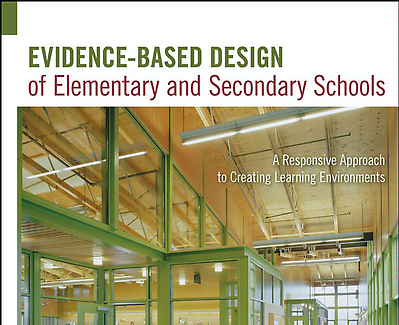 Author: Peter C. Lippman
Author: Peter C. Lippman
Publisher: Wiley – Higher Education
Book Review by: Paiso Jamakar
This book of 336 pages with 10 chapters is the first of its kind, according to the author Peter C. Lippman in his Preface. He writes that this book is not about design; it is about how learning environments can be programmed, planned and designed. It is a book therefore that is useful to researchers, educators, architects and design professionals in planning and constructing schools that are conducive to teaching and learning
There may be no research to show any correlation between performance in school (as measured by students’ Scholastic Aptitude Test scores, for example) and school environments. Students from China, India and other countries for example (where the physical facilities are mostly very poor in design and function) typically perform better in international scholastic competitions than their counterparts in the United States.
While it has not been proven that modern schools with superior facilities (such as those that are abundant in America) enable students of at those schools to perform better and score higher than students of schools with fewer or worse facilities (even within the United States) the author points out that “educators and researchers must acknowledge that the physical learning environment assists them in providing opportunities for learning to take place.”
This book defines and describes, at the outset, what evidence-based design (known in short as EBD) is, especially as it relates to elementary and secondary schools in the U.S. EBD is a research-based approach used by design professionals to understand how the built environment influences individuals’ behavior.
EBD is used extensively in healthcare facilities, the author points out. Besides hospitals, it is also used to plan the layouts of hotels and other commercial buildings. This approach to design is grounded in empirical research, notes the author, and its three areas of focus are: building technology, information technology and building maintenance.
Over the last 15 or so years, EBD has included green design strategies, especially indoors, taking into account such considerations as acoustics, air quality, environmental factors, and lighting. Creating green buildings has become imperative for people in all sectors of society: builders, business people, governments, investors, realtors and more.
This book’s purpose is to provide a framework integrating EBD in the planning of an educational facility and assist the school planner, architect and designer in the effort of creating a good learning environment.
Among other tasks and objectives, Peter Lippman indicates in his own words that this book:
- Examines the current practice and theory guiding design
- Provides a definition of a responsive design approach
- Offers research methodologies that can guide the programming, planning, and designing of learning environments
- Explores the history of school design and technology in learning environments
- Puts forth practice theory as a model for designers to consider when programming, planning and designing learning environments
- Identifies twentieth-century teaching methods that are guiding twenty-first century learning environments
- Builds on research to develop a theoretical framework for analyzing learning environments
- Provides case studies that may be characterized as following a responsive design approach
- Considers what learning environments may be in the next decade and beyond
Lippman indicates in the last chapter that he has heard at conferences a number of designers say that learning can take place in any type of setting, including under a tree. He writes that some or many educators may ascribe to this view as well, that the physical environment may not have an impact on learning. Architects also may hold the position that school facilities do not influence –negatively or positively – students’ learning.
He explains that those involved in researching, planning and executing school designs and construction plans “may undervalue their role in creating places that promote development.” By development, he refers to teaching and learning.
As a conclusion to this review, we use the author’s own words in spelling out why he wrote Evidence-Based Design of Elementary and Secondary Schools: “Consequently, this book emphasizes and recognizes the preeminence of the physical environment in influencing the learning environment.”






